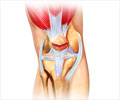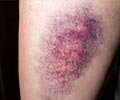Although building and playing in tree houses is widely considered a rite of passage for children, it can unfortunately lead to serious injury.
A recent study conducted by the Center for Injury Research and Policy of The Research Institute at Nationwide Children's Hospital found that an average of 2,800 children younger than 20 years of age visited emergency departments for tree house-related injuries each year from 1990-2006.According to the study, published in the March issue of Academic Emergency Medicine, the majority of tree house-related injuries occurred when a child fell or jumped from the tree house. The most common injuries were fractures (37 percent), bruises (20 percent) and cuts (20 percent) to the upper body.
"The most serious tree house-related injuries occurred when children fell from great heights and onto hard, non-impact-absorbing surfaces," said study author Lara McKenzie, PhD, principal investigator at the Center for Injury Research and Policy at Nationwide Children's Hospital. "The odds of a child requiring hospitalization tripled if the fall was from higher than 10 feet, and boys and older children were the most likely to sustain falls from these heights."
The findings of this study are consistent with previous studies on falls and playground injuries which have led to the establishment of safety standards and regulations regarding height and surface type for playgrounds. However, despite many of the same risks, tree houses have little regulation and oversight, and safety standards are minimal and vary by location.
"Tree house safety deserves special attention because of the potential for serious injury or death due to falls from great heights, as well as the absence of national or regional safety standards," said Dr. McKenzie, also a faculty member of The Ohio State University College of Medicine. "We recommend tree house safety standards are modeled after those developed for playgrounds by the Consumer Product Safety Commission and the American Society for Testing and Materials."
Specific recommendations include building tree houses low to the ground (no more than 10 feet), covering a 72-inch zone around the tree house with at least 9 inches of protective surfacing (such as wood mulch), using solid barrier walls at least 38 inches in height instead of guardrails, and requiring adult supervision for any child younger than 6 years of age using a tree house.
Advertisement
The Center for Injury Research and Policy (CIRP) works globally to reduce injury-related pediatric death and disabilities. With innovative research at its core, CIRP works to continually improve the scientific understanding of the epidemiology, biomechanics, prevention, acute treatment and rehabilitation of injuries. CIRP serves as a pioneer by translating cutting edge injury research into education, advocacy and advances in clinical care.
Advertisement
Source-Newswise
SRM









